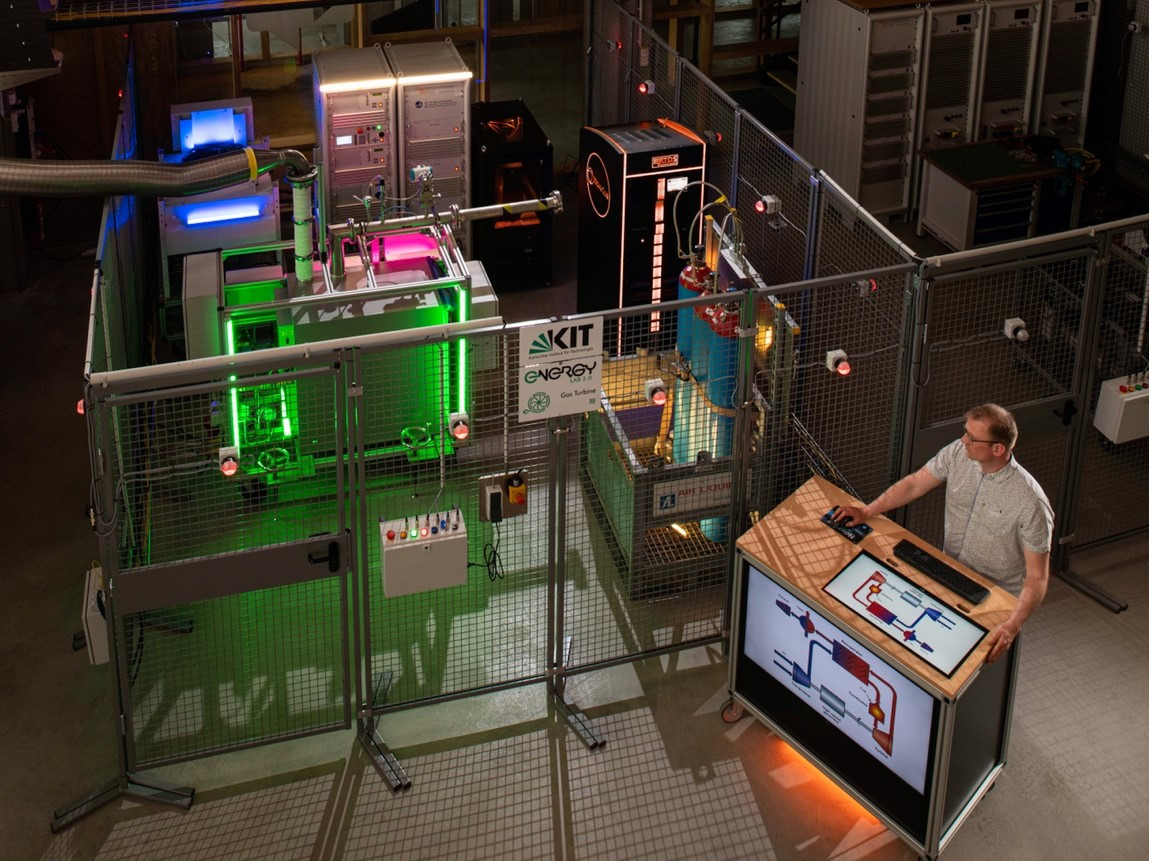Micro-gas Turbine

The laboratory set-up consists of six main components. From a functional point of view, these are the micro gas turbine, the fuel supply and the cooling system for heat dissipation. From the measurement and control point of view, the system is supplemented by the air mass measurement, the real-time simulator and the power amplifier.
The investigated micro gas turbine of the Dutch company "Micro Turbine Technology BV" (MTT) is one of these commercial products on the market. With a thermal output (heat output) of 15.6 kW and an electrical output of 3.1 kW, the system is designed for private households and offices.
The unique selling point of this project is the integration of all work steps in the so-called real-time simulation environment (Power Hardware in the Loop). Unlike theoretical simulations, the existing real-time simulation system enables us to link the real gas turbine and the simulation model. This means that all investigation and modelling results can be scientifically validated. This benefits the results of the application scenarios in particular, and thus their informative value.
The term "Power Hardware in the Loop" refers to a methodology for linking simulation and operating equipment. Through this connection, the actual behavior of a piece of equipment can be implemented in a simulation. Complex modelling of the equipment is thus bypassed. This may involve the entire modelling or only parts of the modelling. In addition to saving time by eliminating the need for modelling, PHIL investigations offer a high degree of integrity. There is no better model than the real equipment. Complex systems may involve more than one resource. The methodology can also be extended to non-electrical variables.
